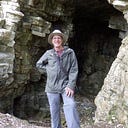Looking Both Ways
Looking Both Ways
From inside-out
Our gaze is boundless, endless,
Never complete
We sense the enormity of the eternity
In which we belong
.
From outside-in
Our gaze is truncated
At the surfaces of our own and others’ bodies
We sense the smallness
Within which our lives and others are contained
Temporarily
.
Each gaze tells its own story
Contradicting the other
‘
Until we look both ways
And put the two together
In mutual admiration
.
Then something wonderful happens
We come to know our selves
From inside-out and outside-in
As the reality we are
‘
Space embraced by light
Light embraced by space
Each including the other
In endless co-creation
Distinct but never separate
.
Timely embodiments of timeless space
Never alone
Never all one
Keeping ourselves to ourselves
In the natural companionship of one another’s neighbourhood
‘
We are not units of selection
Made from units of selection
Objects, machines or building blocks of life
Pushed and pulled around or put together
By external force of God or Nature
.
We are children of Light and Darkness
Offspring of their Love
And, to know this
We only have to look both ways
Not one or other alone
…
The above draws attention to two ways of seeing, sometimes referred to as subjective and objective, which yield radically different perceptions of ourselves, Nature and our place in Nature. Often these come into cultural, ideological, philosophical and psychological conflict, as between Art and Science, Religion and Science, Creationism and Darwinism, Reductionism and Holism, Dualism and Monism, Individualism and Collectivism, Extroversion and Introversion, Rationality and Emotion, Materialism and Spirituality and so on. In truth, however, neither alone can provide a comprehensive awareness of reality and each alone can yield only a one-sided, paradoxical, misleading and damaging view. But if combined they bring a third way of seeing, through looking both ways, which makes possible a radically different, more realistic and more comprehensive kind of awareness of Nature and our human place in Nature. This is the basis through which we become aware of our dynamic self-inclusion in natural neighbourhood as distinct but not isolated identities. And with that awareness the source of so much needless human conflict and misunderstanding can be recognised and replaced by a deep sense of natural, co-creative companionship with one another in shared neighbourhood.
See also http://www.spanglefish.com/exploringnaturalinclusion
